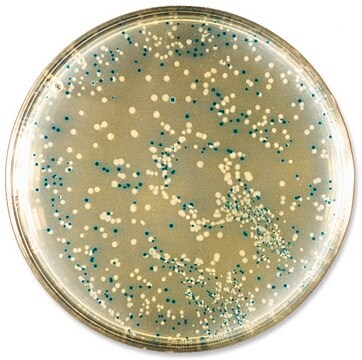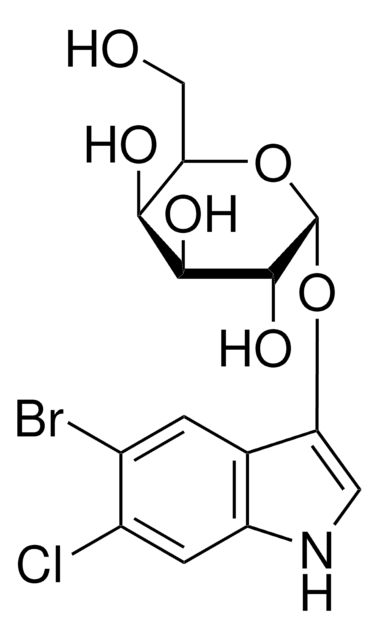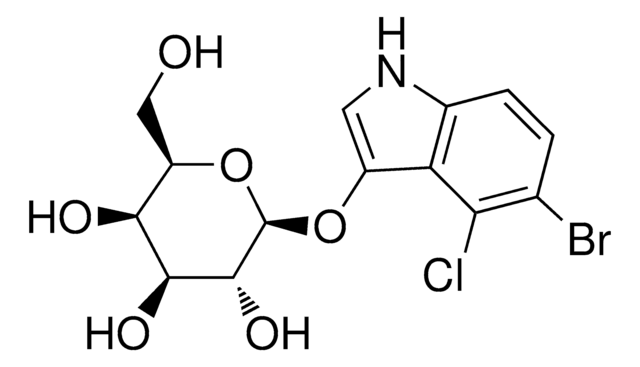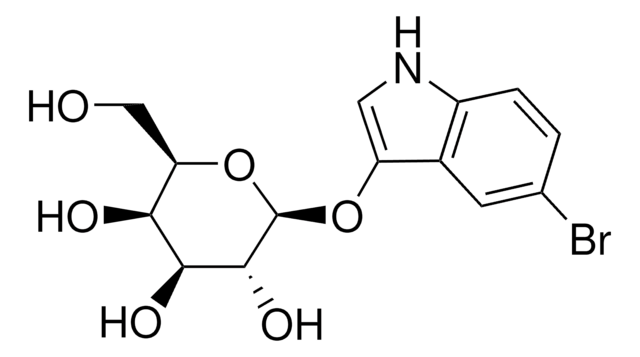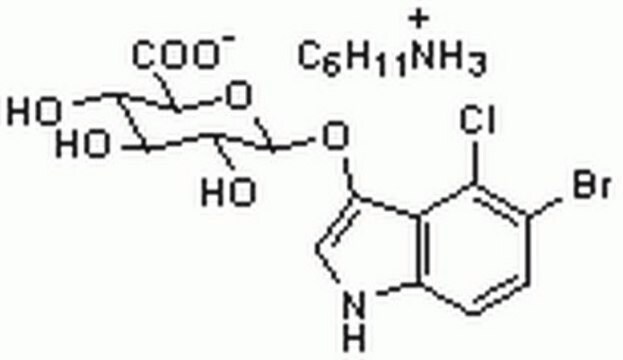B6650
X-GlcA
reagent for selection of recombinant bacterial clones
Synonym(e):
5-Brom-4-Chlor-3-Indolyl β-D-Glucuronid Cyclohexylaminsalz, X-GlcA, X-glucuronid Cyclohexylaminsalz
About This Item
Empfohlene Produkte
Qualität
Molecular Biology Reagent
for molecular biology
Qualitätsniveau
Sterilität
non-sterile
Assay
≥98% (TLC)
Form
powder
Methode(n)
nucleic acid detection: suitable
Löslichkeit
DMF: soluble
Eignung
suitable for β-galactosidase test
Lagertemp.
−20°C
SMILES String
NC1CCCCC1.O[C@@H]2[C@@H](O)[C@@H](O[C@@H]([C@H]2O)C(O)=O)Oc3c[nH]c4ccc(Br)c(Cl)c34
InChI
1S/C14H13BrClNO7.C6H13N/c15-4-1-2-5-7(8(4)16)6(3-17-5)23-14-11(20)9(18)10(19)12(24-14)13(21)22;7-6-4-2-1-3-5-6/h1-3,9-12,14,17-20H,(H,21,22);6H,1-5,7H2/t9-,10-,11+,12-,14+;/m0./s1
InChIKey
JXCKZXHCJOVIAV-CYRSAHDMSA-N
Suchen Sie nach ähnlichen Produkten? Aufrufen Leitfaden zum Produktvergleich
Allgemeine Beschreibung
Anwendung
X-GlcA has been used in histochemical staining of root sections for light microscopic observation.
Prinzip
Ähnliches Produkt
Analysenzertifikate (COA)
Suchen Sie nach Analysenzertifikate (COA), indem Sie die Lot-/Chargennummer des Produkts eingeben. Lot- und Chargennummern sind auf dem Produktetikett hinter den Wörtern ‘Lot’ oder ‘Batch’ (Lot oder Charge) zu finden.
Besitzen Sie dieses Produkt bereits?
In der Dokumentenbibliothek finden Sie die Dokumentation zu den Produkten, die Sie kürzlich erworben haben.
Kunden haben sich ebenfalls angesehen
Artikel
probiotics-and-human
Unser Team von Wissenschaftlern verfügt über Erfahrung in allen Forschungsbereichen einschließlich Life Science, Materialwissenschaften, chemischer Synthese, Chromatographie, Analytik und vielen mehr..
Setzen Sie sich mit dem technischen Dienst in Verbindung.